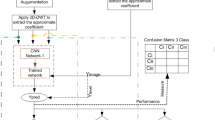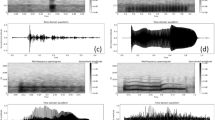Abstract
Background and objective
Fecal incontinence may lead to incontinence-associated dermatitis (IAD), affecting the physical health of the patient. Since human defecation is related to intestinal activity, and bowel sounds can reflect bowel motility, a prediction method for human defecation based on deep residual attention network (DRAN) using bowel sounds was proposed to prevent IAD.
Methods
We collected 1140 bowel sounds of 20 seconds from 15 volunteers. These bowel sounds were transformed into time-frequency maps by wavelet packet transform (WPT). Then the time-frequency maps are taken as input to the DRAN. DRAN classified bowel sounds to predict whether the patient would defecate.
Results
After training, the defecation prediction accuracy, precision and recall of DRAN could reach 91.18%, 91.67% and 90.59% respectively,
Conclusion
The result indicates that the proposed method could provide a high-precision defecation prediction result for patients with fecal incontinence, so as to prepare for defecation in advance and prevent the occurrence of IAD.














Similar content being viewed by others
Data Availability
The datasets generated during and/or analysed during the current study are available from the corresponding author on reasonable request.
References
Brown HW, Dyer KY, Rogers RG (2020) Management of Fecal Incontinence. Obstet Gynecol 136(4):811–822
Banharak S et al (2021) Prevention and Care for Incontinence-Associated Dermatitis Among Older Adults: A Systematic Review. J Multidiscip Healthc 14:2983–3004
Zhang Y et al (2021) The effectiveness of faecal collection devices in preventing incontinence-associated dermatitis in critically ill patients with faecal incontinence: A systematic review and meta-analysis. Austr Critical Care 34(1):103–112
Lim Y, Carville K (2019) Prevention and Management of Incontinence-Associated Dermatitis in the Pediatric Population: An Integrative Review. J Wound Ostomy Continence Nurs 46(1):30–37
Coyer F, Campbell J (2018) Incontinence-associated dermatitis in the critically ill patient: an intensive care perspective. Nursing Critical Care 23(4):198–206
Gray M et al (2018) Assessment, Selection, Use, and Evaluation of Body-Worn Absorbent Products for Adults With Incontinence: A WOCN Society Consensus Conference. J Wound Ostomy Continence Nursing 45:243–264
Denat Y, Khorshid L (2011) The Effect of 2 Different Care Products on Incontinence-Associated Dermatitis in Patients With Fecal Incontinence. J Wound Ostomy Continence Nursing 38(2):171–176
Mugita Y et al (2021) Assessing absorbent products' effectiveness for the prevention and management of incontinence-associated dermatitis caused by urinary, faecal or double adult incontinence: A systematic review. J Tissue Viabil 30(4):599–607
Sung VW et al (2014) Symptom Outcomes Important to Women With Anal Incontinence A Conceptual Framework. Obstet Gynecol 123(5):1023–1030
Bampton PA et al (2000) Spatial and temporal organization of pressure patterns throughout the unprepared colon during spontaneous defecation. Am J Gastroenterol 95(4):1027–1035
Crowell MD et al (1991) Method for prolonged ambulatory monitoring of high-amplitude propagated contractions from colon. Am J Phys 261(2 Pt 1):G263–G268
Palit S, Lunniss PJ, Scott SM (2012) The Physiology of Human Defecation. Dig Dis Sci 57(6):1445–1464
Kim KS, Seo JH, Song CG (2011) Non-invasive algorithm for bowel motility estimation using a back-propagation neural network model of bowel sounds. Biomed Eng Online 10
Nowak JK et al. (2021) Automated Bowel Sound Analysis: An Overview. Sensors 21(16)
Du, X.H., et al. (2018) Bowel Sounds Identification and Migrating Motor Complex Detection with Low-Cost Piezoelectric Acoustic Sensing Device. Sensors 18(12)
Ching SS, Tan YK (2012) Spectral analysis of bowel sounds in intestinal obstruction using an electronic stethoscope. World J Gastroenterol 18(33):4585–4592
Ulusar UD (2014) Recovery of gastrointestinal tract motility detection using Naive Bayesian and minimum statistics. Comput Biol Med 51:223–228
Dimoulas C et al (2008) Bowel-sound pattern analysis using wavelets and neural networks with application to long-term, unsupervised, gastrointestinal motility monitoring. Expert Syst Appl 34(1):26–41
Lin BS et al (2013) Enhancing Bowel Sounds by Using a Higher Order Statistics-Based Radial Basis Function Network. IEEE J Biomed Health Inform 17(3):675–680
Hassan SA et al (2020) Breast cancer masses classification using deep convolutional neural networks and transfer learning. Multimed Tools Appl 79(41-42):30735–30768
Tan JH et al (2018) Application of stacked convolutional and long short-term memory network for accurate identification of CAD ECG signals. Comput Biol Med 94:19–26
Juzheng L et al. (2018) Bowel Sound Detection Based on MFCC Feature and LSTM Neural Network. IEEE Biomedical Circuits and Systems Conference (BioCAS) , pp 1-4
He KM et al. (2016) Deep Residual Learning for Image Recognition. 2016 Ieee Conference on Computer Vision and Pattern Recognition (Cvpr), pp 770-778
Hu J, Shen L, Sun G (2018) Squeeze-and-Excitation Networks. 2018 Ieee/Cvf Conference on Computer Vision and Pattern Recognition (Cvpr), pp 7132-7141
Eren L, Devaney MJ (2004) Bearing damage detection via wavelet packet decomposition of the stator current. IEEE Trans Instrum Meas 53(2):431–436
Ngoc PP et al. (2015) EEG Signal Analysis and Artifact Removal by Wavelet Transform. 5th International Conference on Biomedical Engineering in Vietnam 46: 179-183
Alickovic E, Kevric J, Subasi A (2018) Performance evaluation of empirical mode decomposition, discrete wavelet transform, and wavelet packed decomposition for automated epileptic seizure detection and prediction. Biomed Signal Process Control 39:94–102
Tu W, Wei QG (2009) Classification of three-class motor imagery EEG data by combining wavelet packet decomposition and common spatial pattern. 2009 International Conference on Intelligent Human-Machine Systems and Cybernetics 1: 188-191
Yang B et al (2016) Subject-based feature extraction by using fisher WPD-CSP in brain-computer interfaces. Comput Methods Prog Biomed 129:21–28
Tikkanen PE, Sellin LC (1997) Wavelet and wavelet packet decomposition of RR and RTmax interval time series. Proceedings of the 19th Annual International Conference of the IEEE Engineering in Medicine and Biology Society. Magnificent Milestones Emerg Opportunities Med Eng 1:313–316
Yildirim O, Baloglu UB, Acharya UR (2020) A deep convolutional neural network model for automated identification of abnormal EEG signals. Neural Comput Applic 32(20):15857–15868
Funding
This work was supported by the National Major Science and Technology Project of China [grant numbers 2020YFC2007600].
Author information
Authors and Affiliations
Corresponding author
Ethics declarations
Conflicts of interest
The authors declare no conflict of interest.
Additional information
Publisher’s note
Springer Nature remains neutral with regard to jurisdictional claims in published maps and institutional affiliations.
Rights and permissions
Springer Nature or its licensor (e.g. a society or other partner) holds exclusive rights to this article under a publishing agreement with the author(s) or other rightsholder(s); author self-archiving of the accepted manuscript version of this article is solely governed by the terms of such publishing agreement and applicable law.
About this article
Cite this article
Zhang, T., Yang, Y., Zou, Y. et al. Deep residual attention network for human defecation prediction using bowel sounds. Multimed Tools Appl 83, 36097–36113 (2024). https://doi.org/10.1007/s11042-023-17091-1
Received:
Revised:
Accepted:
Published:
Issue Date:
DOI: https://doi.org/10.1007/s11042-023-17091-1




